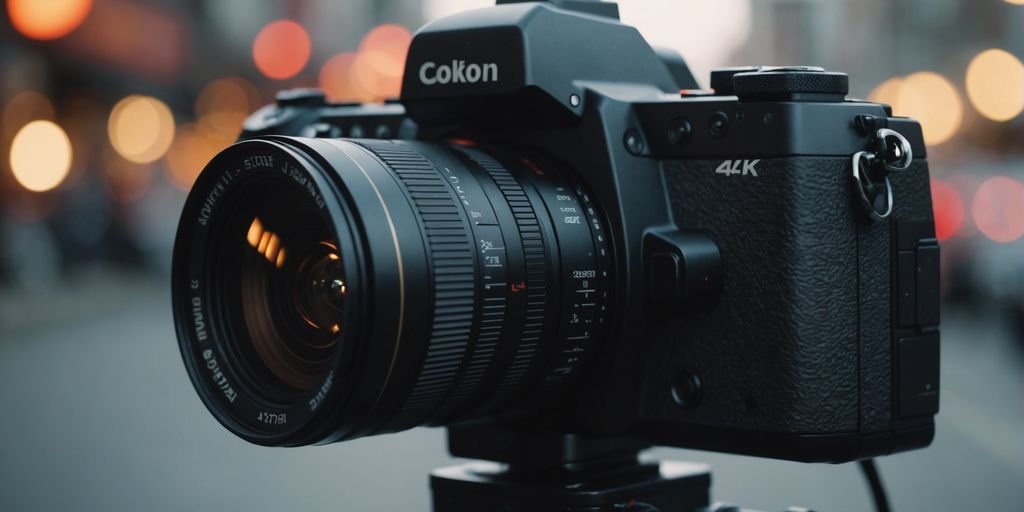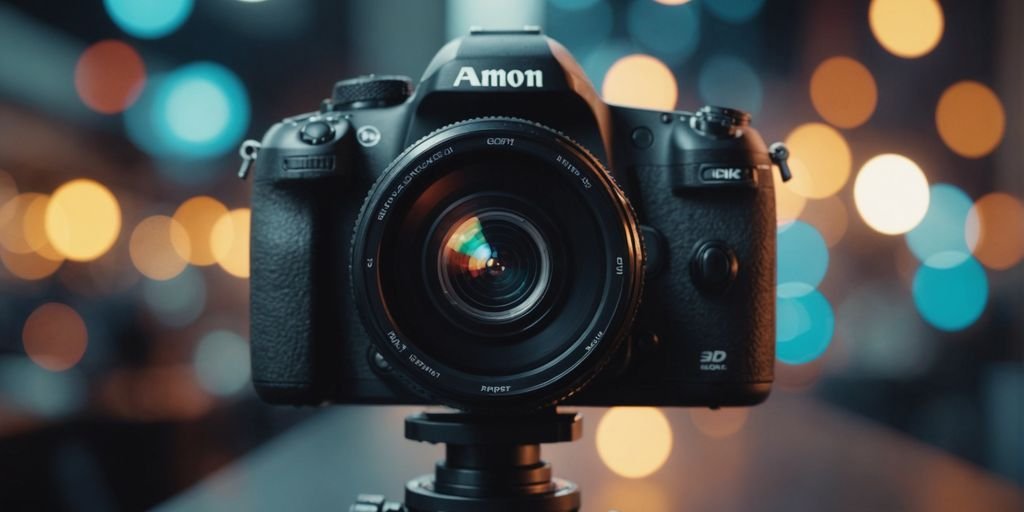In the rapidly evolving digital landscape, businesses are constantly seeking innovative ways to captivate their audience and stand out in a crowded market. One of the most groundbreaking advancements in this arena is the use of diffusion models in artificial intelligence (AI) to generate stunning visuals. These AI image generation tools are not only enhancing the visual content but also revolutionizing marketing strategies by offering a blend of technology and creativity. This article delves into the world of AI image generation, exploring the capabilities of these tools, comparing top technologies, and providing insights on how businesses can strategically integrate them to elevate their operations and connect more authentically with their target demographics.
Key Takeaways
- AI image generation platforms, like diffusion models, are transforming business marketing by creating high-quality, custom visuals that resonate with target audiences and enhance brand identity.
- Strategic integration of AI image tools into business operations can lead to improved efficiency, creativity, and a competitive edge in crafting compelling visual narratives and user experiences.
- By selecting the right AI tools and developing a forward-thinking strategy, businesses can leverage AI to not only automate routine design tasks but also generate innovative designs that captivate and engage.
Harnessing the Power of AI Image Generation
Exploring AI Image Tools and Their Capabilities
The landscape of AI image generation is rapidly evolving, with tools like Stable Diffusion and Midjourney leading the charge in creating high-quality visuals. These platforms have set a new standard in the industry, offering capabilities that extend far beyond traditional image editing software.
When assessing the capabilities of AI image tools, it’s essential to consider their ability to produce photo-realistic images, the diversity of styles they can emulate, and the intuitiveness of their user interfaces. A recent comparative analysis highlighted the top AI image generators of 2024, showcasing a variety of tools each with their own strengths:
- Exceptional image quality
- Photo-like realism
- Art generation
- User-friendly interfaces
These features are not just technical achievements; they represent a significant shift in how businesses can approach visual content creation. With AI image tools, the process of generating compelling visuals is now more accessible and efficient, allowing for rapid prototyping and iteration.
The integration of AI image generation tools into business workflows can dramatically enhance creative output, offering a competitive edge in visual marketing and product design.
As the technology continues to advance, businesses that adopt these tools early on will likely see a marked improvement in their ability to engage with customers and stand out in a crowded digital landscape.
Comparative Analysis of Top AI Image Generation Technologies
The landscape of AI image generation is rapidly evolving, with numerous tools vying for the top spot. A recent review by ZDNET highlighted Image Creator from Microsoft Designer as the best overall AI image generator of 2024, praised for its no-cost, high-quality outputs. However, the competition is fierce, with each tool offering a unique blend of features tailored to various creative demands.
When assessing these technologies, it’s essential to consider factors such as image quality, style diversity, customization options, and the AI’s text prompt interpretation skills. These elements are critical in determining a tool’s overall effectiveness and user experience.
The future of AI image generators looks promising, with expectations of improved realism, enhanced creativity, and better context understanding. As we integrate these tools into our creative workflows, it’s also crucial to be mindful of the legal and ethical implications of AI-generated images.
The right AI image generator can significantly amplify a business’s creative capabilities, offering a competitive edge in producing engaging visuals.
Crafting Compelling Visuals with AI Image Tools Prompt Guides
The art of creating visuals with AI image tools has become increasingly sophisticated, with the ability to generate high-resolution images that can rival traditional photography and graphic design. Using custom prompts effectively is key to unlocking the full potential of these tools. By carefully crafting prompts, users can guide the AI to produce images that align with their specific vision and objectives.
For businesses looking to integrate AI image generation into their workflow, understanding the step-by-step process is crucial. Here’s a simplified guide:
- Navigate to your chosen AI image generator platform.
- Enter a detailed text prompt that encapsulates the theme or concept you wish to visualize.
- Adjust the prompt’s word weight to fine-tune the artistic direction.
- Select from a variety of styles, moods, and resolutions to customize your image.
- Utilize features like image-to-image transformation to further refine your visuals.
Embracing AI image generation tools can transform the way businesses create and use visuals, offering an unprecedented level of customization and efficiency.
With platforms like Freepik’s AI image generator, users have access to powerful text-to-image models and a plethora of styles and sizes. The integration of these tools into business operations can lead to a surge in content creation capabilities, providing a competitive edge in the market.
Innovative Applications: AI Image Tools Use Cases
The landscape of visual content creation has been transformed by the advent of AI image generation tools. These generators can create highly realistic and complex images, including landscapes, faces, objects, and more. They have practical applications in various sectors, from entertainment to real estate, offering a new realm of possibilities for businesses looking to innovate.
One of the most compelling use cases in recent months is the integration of AI image tools in digital marketing. The ability to generate unique and eye-catching visuals on-demand aligns perfectly with the fast-paced nature of online advertising. Here’s how businesses are leveraging this technology:
- Personal Branding: Entrepreneurs and influencers are using AI to craft distinct visual identities.
- Product Visualization: E-commerce sites generate lifelike images of products that are yet to be manufactured.
- Interactive Campaigns: Brands create engaging marketing campaigns with visuals that adapt to user interactions.
The continuous advancement of AI image tools is not just a technical marvel but a strategic asset for businesses. The adaptability of these tools means they can evolve with market trends, ensuring that the visuals remain fresh and relevant.
As we look to the future, the trajectory of AI image generation is clear. With improvements in realism, creativity, and context understanding, these tools are set to become an indispensable part of the business toolkit. The top 70+ generative AI applications outlined recently reflect a growing trend of AI adoption across industries, signaling a shift towards more innovative and efficient content creation strategies.
Strategic Integration of AI in Business Operations
Selecting the Right AI Tools for Your Company
In the rapidly evolving landscape of artificial intelligence, selecting the right AI tools for your business can be a daunting task. Assessing the AI solution’s ability to meet your specific requirements is crucial. This includes evaluating the tool’s technical capabilities, scalability, and security features.
When considering AI tools for social media management, a trending topic in the past months has been the use of AI to generate engaging content. For instance, Predis.ai has been highlighted as a top choice for creating posts, carousels, and videos, streamlining the content creation process.
It’s essential to verify that the AI solution adheres to industry standards and regulatory requirements, ensuring that the technology integrates seamlessly with your existing infrastructure.
Here are some key considerations when selecting AI tools:
- Confirm the provider’s solutions comply with data privacy laws relevant to your operations.
- Research the AI development companies’ track record and reliability.
- Consider the partner’s ability to support your specific needs, including integration and data privacy compliance.
Developing a Forward-Thinking AI Company Strategy
In the rapidly evolving landscape of artificial intelligence, developing a forward-thinking AI strategy is crucial for businesses aiming to stay competitive. A key aspect of this strategy is the integration of generative AI, which has been a significant trend in the past few months, especially in the realm of startups. Generative AI has the potential to revolutionize product development, customer engagement, and operational efficiency.
To effectively leverage generative AI, companies should:
- Map out the technical requirements for AI integration
- Modify current processes for AI-driven workflows
- Conduct compatibility assessments and pilot tests
It’s essential to create a culture that embraces AI, with tailored training sessions and initiatives to enhance AI literacy across the organization.
Furthermore, a framework for ethical AI use is imperative, addressing data privacy, bias mitigation, and transparency. This ensures that as AI solutions scale with business growth, they do so in a responsible and sustainable manner.
Real-World AI Use Cases for Enhancing Company Performance
In the dynamic landscape of business technology, AI-driven predictive maintenance has emerged as a game-changer for manufacturing industries. By utilizing historical data of production, AI models can not only predict equipment failures but also suggest proactive measures to prevent downtime. This real-time analysis and response capability is revolutionizing how companies approach maintenance and operations.
- AI for Demand Forecasting
- AI for Anomaly Detection
- AI for Production Planning
The integration of AI into manufacturing processes ensures a significant reduction in unplanned outages and maintenance costs, while simultaneously improving the lifespan of machinery.
In the financial sector, AI is transforming operations through applications like AI-based credit scoring and AI for financial compliance, enhancing accuracy and efficiency. The banking industry, in particular, has seen a surge in AI adoption for tasks such as loan underwriting and fraud detection, leading to more secure and streamlined financial services.
Analyzing the Impact of AI on Business Efficiency and Creativity
The integration of AI into business operations has been a game-changer, particularly in the realms of efficiency and creativity. AI-driven analytics are optimizing investment decisions, enabling companies to process and analyze vast amounts of data with unprecedented speed and accuracy. This not only enhances the decision-making process but also frees up valuable human resources for more creative tasks.
In the context of content creation, AI’s role has shifted from manual effort to algorithmic ingenuity. The technology is now an ally in generating, curating, and delivering content, which has significant implications for marketing strategies and customer engagement.
The productivity paradox, where increased investments in technology do not always correlate with expected gains in productivity, is being addressed by AI’s creative potential. By breaking down silos between teams and fostering collaboration, AI is enabling brands to achieve higher productivity and gain a competitive edge.
For startups and small businesses, the impact of AI is particularly pronounced. It’s crucial to:
- Examine existing IT infrastructure for AI integration
- Assess data quality for training AI models
- Evaluate resources for AI solution management
- Gauge organizational culture’s openness to AI-driven processes
These steps ensure that businesses can leverage AI not just for impact and cost savings, but also for significant improvements in customer satisfaction.
Embracing the Future of Visuals with AI
In conclusion, the integration of diffusion models and AI image generation tools into business strategies represents a transformative leap in the realm of visual content creation. These cutting-edge technologies offer an unprecedented blend of creativity and efficiency, enabling businesses to craft stunning, high-resolution visuals that resonate with their target audience. By leveraging AI-generated images, companies can enhance their marketing campaigns, enrich user interfaces, and stand out in competitive markets with unique designs and personalized experiences. As we’ve explored, the potential applications are vast, from generating virtual trainers for a fitness brand to automating routine design tasks. The future of visuals is here, and it’s powered by AI. Embracing these tools not only positions businesses at the forefront of innovation but also unlocks new avenues for growth and engagement in the digital era.
Frequently Asked Questions
What are the benefits of using AI image generation in marketing strategies?
AI image generation offers a blend of technology and creativity, enabling businesses to create customized visuals that resonate with specific demographics. This can elevate marketing strategies by providing high-resolution, brand-aligned images that foster authenticity and a deeper audience connection, enhancing inclusivity and appeal.
How can AI image tools be integrated into a company’s operations?
AI image tools can be strategically integrated into various aspects of a company’s operations, such as user interface design, creative design tasks, and automated design workflows. By using generative AI, companies can generate novel visual concepts and product designs, streamline routine tasks, and ensure their offerings stand out in competitive markets.
What is the potential market value of AI image generation platforms?
The market for AI image generation platforms is projected to grow significantly, with an estimated value of USD 917 million by 2030. This rapid growth is driven by the demand for innovative and beginner-friendly tools that allow users to create diverse and dynamic visual content across various AI models.



